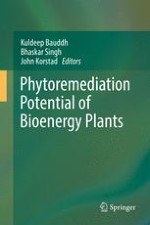2017 | OriginalPaper | Buchkapitel
13. Macrophytes for the Reclamation of Degraded Waterbodies with Potential for Bioenergy Production
verfasst von : Sangeeta Anand, Sushil Kumar Bharti, Neetu Dviwedi, S. C. Barman, Narendra Kumar
Erschienen in: Phytoremediation Potential of Bioenergy Plants
Verlag: Springer Singapore
Aktivieren Sie unsere intelligente Suche, um passende Fachinhalte oder Patente zu finden.
Wählen Sie Textabschnitte aus um mit Künstlicher Intelligenz passenden Patente zu finden. powered by
Markieren Sie Textabschnitte, um KI-gestützt weitere passende Inhalte zu finden. powered by
